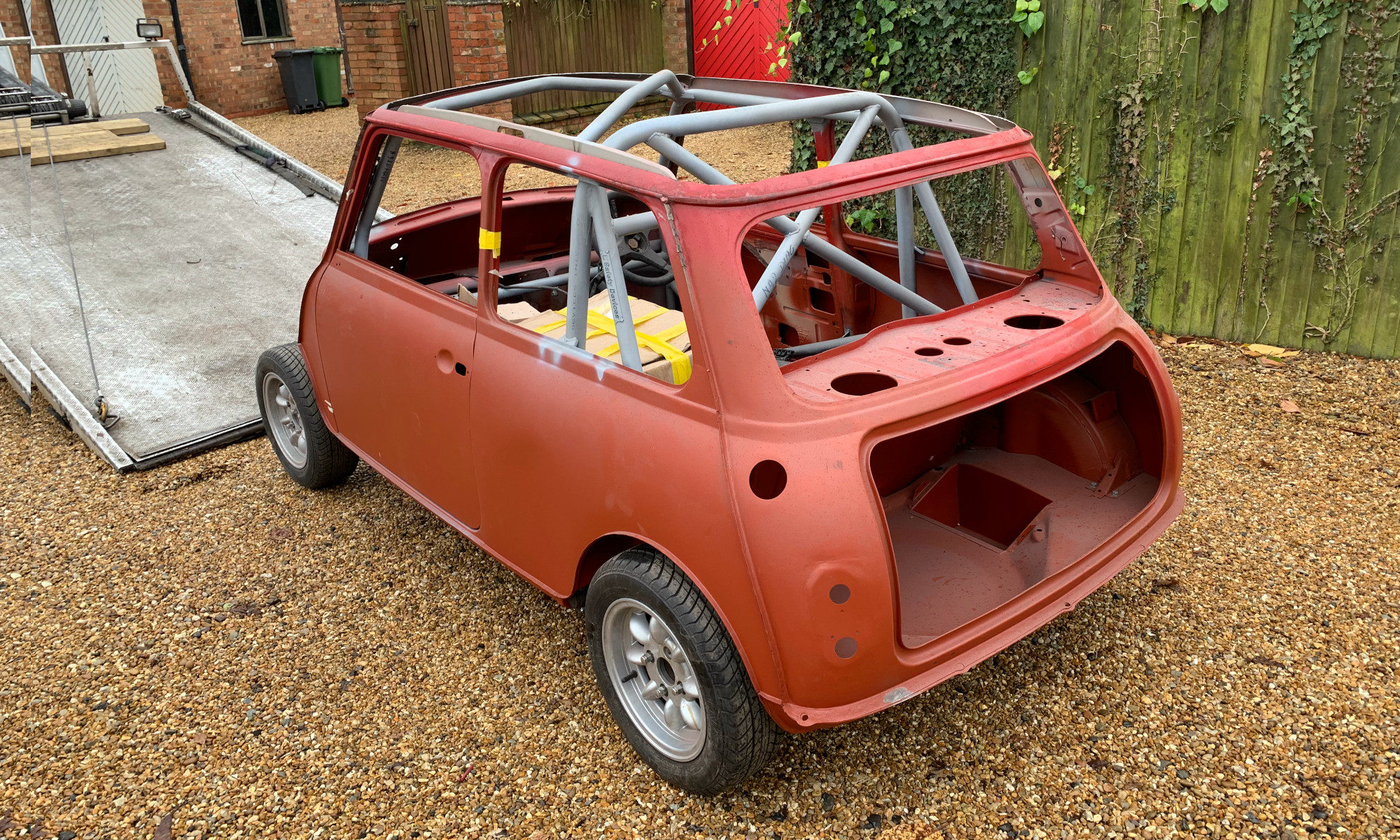Before the shell goes off for bodywork and paint, I wanted to look again at how I have the carbon-fibre front end fastened to the car. Currently, there are two bonnet pins attached to the front of the subframe, which fasten the front panel where the usual rubber mounts would go.
This setup has worked well for many years, however I wondered if there was a way of making this lower mount more subtle and less obviously non-standard. I could of course just bolt it on, making it look just like standard, however I want to retain the quick-release ability of the bonnet pins.
After looking around at all sorts of motorsport fasteners, it looked like some push button bonnet pins might do the trick. The way these work is that the bonnet pin has kind of a ball at the end of it and the fastener grips onto this ball. This is useful, as it allows the fastener a bit of freedom to fasten at a bit of an angle, whereas with a traditional bonnet pin, the panel must fasten at 90 degrees to the pin. Here’s a pic of the pin and with the fastener mounted.
I bought a pair of these push release bonnet pins to try them out and see if they’d be a better option. Because the front panel is curved at the bottom, where the bonnet pins mount, I’d had to make up a spacer previously, to allow the regular bonnet pins to work. Here’s what I mean.

This one was just a trial, but you can see that I’d need to make the aluminium spacer fit the curve of the panel, in order to allow the bonnet pin to fit securely.
Having fitted the new push release bonnet pin to one side of the car, I tried it out to see how well it would work. A couple of problems came to light; firstly, although the push release bonnet pins can work at an angle, that angle is limited and is less than the angle required to match the curve of the front panel. Secondly, it makes it much harder to mount the front end with this style of bonnet pin, as you have to line it up exactly, then push to click it on, which requires some force. Quite a difficult thing to do when you’re holding up the whole front end of the car while you do it. With the original bonnet pins, it’s pretty easy to slide the front end onto the pins, then the pins take the weight as you line everything up and attach the fasteners, making it very simple to attach the front end.
The angle at which the fastener part will grip the pin is limited. This is the maximum angle at which it will grip properly.

Unfortunately, this angle is less than the curve of the front panel where it fastens to the bonnet pin, so I’d still need to make up some sort of spacer to reduce the angle. Once fitted, this style of bonnet pin did look good and was much more subtle than my existing bonnet pins, especially anodised in red. On balance however, I think I’ll stick with the old method, primarily as it’s much easier to mount the front end with the regular bonnet pins.
I may end up using these pins to replace the bonnet pins on the rear edge of the bonnet though, as those are much more visible and would suit this style of fastener better. At least my little experiment wasn’t wasted!






